#ilyana. aesthetics.
Explore tagged Tumblr posts
Text
Tag Drop (Part 3)
#aisling aesthetics.#aisling visage.#even in our worship of the goddess let us not forget the power of human hearts. aisling main.#lightning sparks between my fingers. alight & alive like i wish to be. ilyana main.#ilyana. aesthetics.#ilyana. visage.#lysithea von ordelia. visage.#lysithea von ordelia. aesthetics.#wisest of the golden. will you ever let yourself rest. lysithea main.
0 notes
Text
I know the aesthetic wouldn't really match, but I really want to draw Micaiah (and mayhaps Nephenee & Ilyana) in Roses' dresses from The Titanic
However! The aesthetic I feel like could match for HSR muses like Tuesday which.... I wanna draw them in Roses' fancy red dress cause honestly he could work it.
#ooc || out of stars#// hello friends! i am here!#// i don't know if I'll get any writing done but i am definitely present and working on the aesthetic asks i got#// might also just make some for the whole roster for funsies
1 note
·
View note
Photo


My favorite types of Pokémon playthroughs are a monotype run and trying to get a living dex with everyone having Nintendo-themed nicknames! The former is real fun and challenging to do, especially if it’s your favorite type! As you can see, I’m an electric-type kinda guy. 😎
The latter is also fun and challenging BUT it takes a TON of time and planning because I’m real fussy with nicknames. Like anyone can name whatever after Wario but I want to actually look at a Pokémon and go “Yup that’s definitely Wario alright!” Also I don’t wanna “cheat” by using like 3rd party series that are shown in Smash Bros.
For my Pokémon, here’s what I’ve named them all so far:
Party: Glimmer (Donkey Kong Country 2), Squeaker (Kirby: Squeak Squad), Dryguy (Mother 3), Timber (Diddy Kong Racing), Jobski (Part Time UFO), Ilyana (Fire Emblem: Path of Radiance)
First Row: [not nicknamed because the game wouldn’t let me rename the Zeraora after Urbosa from Breath of the Wild], Vanessa (WarioWare: Touched!), Murch (Splatoon 2), Lappy (Astral Chain), Funky Kong (Donkey Kong Country), Pump Chimera (Mother 3)
Second Row: Bombchu (Ocarina of Time/Majora’s Mask), Gonzalez (Fire Emblem: The Binding Blade ), Bivolt (Kirby 64), Tsunku♂ (Rhythm Heaven), Taranza (Kirby: Triple Deluxe), Carpainter (EarthBound)
Third Row: Roto-Disc (Super Mario Bros. 3), Pokey Pipes (Donkey Kong Country 3), Koko (Breath of the Wild), Vendor-3 (Astral Chain), Chiritorie, Pinwheel (Super Mario RPG)
Fourth Row: Stinger (Ocarina of Time), Russ (Dillon’s Rolling Western), Skree (Metroid), Tap-Tap (Yoshi’s Island), Re-Kroil (Donkey Kong Country 3)
#pokémon#i really like the aesthetics of the beast ball so it was well worth the time and effort to get as many breedables in them#i'd love to go on a pokémon journey and become a great electric trainer like volkner or sophocles#but i dunno if my folks would let me run off to another region by myself like this XD#it's really funny how suiting a morpeko is for ilyana lol. like REALLY suiting!
3 notes
·
View notes
Photo


some radiant dawn gals, de-seasonaled. feel free to use with credit!
#fire emblem#tellius#fe10#ilyana#tanith#mine#myfe#myfeh#tanith spray-painting her wife's spare clothes black: for the aesthetic
24 notes
·
View notes
Photo

I can fight... I'm...very angry... The food here... It was terrible, and...they gave us hardly any... I... will have vengeance.
Ilyana, Wandering Sage
*requested by anon*
#fire emblem#fe#ilyana#fire emblem radiant dawn#aesthetic#request#color: yellow#color: purple#mod charlotte
7 notes
·
View notes
Photo
I don’t know who she is.
I love her.
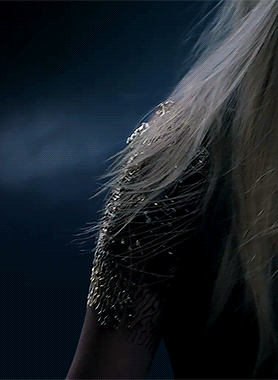

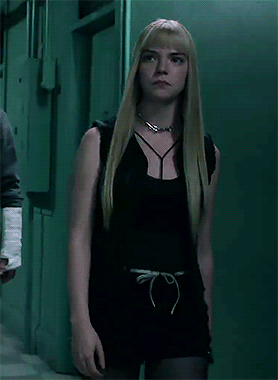
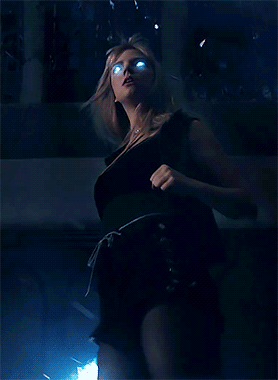


Anya Taylor-Joy as Illyana Rasputin
The New Mutants (2020)
#genre fiction#x-man#marvel#disney#sci fi#fantasy#ilyana rasputin#superheroes#aesthetics#rock and roll#ideas#inspiration#oc inspiration#anya-taylor joy
3K notes
·
View notes
Photo

an aesthetic for a teenage vera/ilyana!
#pb#professor layton and pandora's box#professor layton and the diabolical box#diabolical box#vera pl#pl vera#ilyana pl#pl ilyana#professor layton#professor layton aesthetic#professorlayton#pl#mod hershel
20 notes
·
View notes
Text
10 Signs That You’re in a Clara Novel/Project/Writing Collab/Rp/~Thing~
tagged by @ayzrules thanks for the tag! I love tag games and talking about myself XD
1. DRAGON MOTIFS - [svea, Vera, deevi, shiera, rhaella, ilyana, aurora, literally all of them] lmao, every character and thing ever of mine. I always loved dragons, but the obsession really just clicked in my soul when I watched emilia clarke emerge unharmed from fire with three new dragon hatchlings. after that it was forget whatever witchy and murder shit I was obsessed with as a gothic and macab tween, dragons only now and forever. the dragons can be either literal or figurative, but they are always there. The Dragon does not fear bby.
2. FIRE & ICE DICHOTOMY - [vera, shiera, raya, svea, zlata] almost always in one person, this kind of happened by accident, I’ve always loved winter and the cold, so naturally, all my characters and worlds end up like that too, but I am also hot headed, and the obsession with dragons results in my winter princesses/queens/etc having a fire dragon while also being ruler of the snow and ice. Sometimes more metaphorically with WRC/FTC Vera, who was ruler of the coldest nation on earth and also had a bunch of nukes and wars, but also ITU Vera, again, ruler of the coldest nation in the realms, but her nuke was a literally dragon this time, she also supernaturally caused a volcanic eruption (spoilers).
3. HATING ON/JUDGING AMERICA - [all characters] this is intrinsic to my personality. I hate America and so do all my characters. even characters that exist in realities without america, they still hate it. I will not elaborate.
4. RUSSIANS - [ilyana, zhenya, nika, katya, marena, zlata, vika, vitya, dima, kolya, raya, vova, etc] honestly, I don’t know where my russian obsession started, predates eurovision, post-dragon, but not by much, like, I just woke up one day and decided 80% of my characters are gonna be russian from now on. They tend to be oligarchs, FSB/KGB, bratva is a newer trend for moi. I dunno, but I, a person who has never been to Russia and is not remotely Russian in any way, got brainrot for Russia and Russian history, hmu with them imperial, communist, and modern facts. See you all at Blue Light next year.
5. BOURGEOISIE - [99.9% of all my characters] moi: fucking hates capitalism and finds a way to blame everything on capitalism, also me: makes 99.9% of my characters ungodly wealthy. it’s about the financial security and desire for things. probably. idk, but tis my thing, probably one of my oldest things, always loved royalty and nobility, I tend to make vieux riche as opposed to nouveau riche characters, defunct titles, lost glory and all that.
6. THINLY VEILED REFERENCES TO PPL - [lol, not gonna out myself] this isn’t always a negative, this is something that started in like middle school when I would name characters after my friends and just base their personalities on them without having to think, as I got older, this shifted into being references to other characters, like I’ve made an Oikawa and an Ushijima, etc, and still do that, but on the flipside, also use this to create characters based on people I detest and vicariously act out vengeance.
7. SASS MASTER MEDIEVAL FEMINIST - [élodie i] there were others, but I like to think I’ve grown past this a little, like, don’t get me wrong, I still got my medieval snarky ass ladies who are all for the girl power, but that exact level of my writing at the time was pretty white feminist, and I’m woc, so pathetic me. hopefully, you can find more dynamic and evolved versions of this trope in my writing now, but whatever. I write for me and my friends to enjoy, my bad writing is your problem guys.
8. DESTRUCTION OF A RELIGIOUS ORGANIZATION - [into the unknown, for the crown, serve or burn] this isn’t as common as the other things, but in a setting where I have full control of the world, there’s always something like this, either it is christianity, or is a thinly veiled reference to it. Look, while I do technically agree that there’s no such thing as an “evil religion”, there is nothing more evil than the christain organization, usually I mean catholism, but the evangelicals and mormons are weird and fucked up cults too. Anyway, imma die bitter about all the damage christanity has done to the world, so in my worlds, it gets burned to the ground. I am not sorry.
9. MALE LOVER BOYS ARE JUST A MANIESTFATION OF JOHN MULANEY’S “MY WIFE IS A BITCH AND I LIKE HER SO MUCH” - [nika, lucas, ademir, vorian, kolya, etc ] listen, the only type of male lover I want are those who are deeply devoted to the subject of their affections, no “I lie to protect you” bullshit, they’re pretty, usually buff, but not necessarily, that’s just a common aesthetical attraction choice of mine, and they have like skills and talent I guess, but most of the time they stand behind their wife while she does whatever is plot relevant and hold her hand when she’s sad.
10. A WORLD THAT’S TOO BIG AND TAKES TO LONG TO DEVELOP - [see; into the unknown] listen, listen, I know this is like, a problem with me, okay? I make the world too big and get buried in all the plots and the calendars and the timelines and the history and it’s all an exhausting mess that I never quite finish. but, whatever. I can’t have a basic ass world with no detail, I hate that shit, I’d rather take forever building the world, than the world being empty.
tagging: @celestialfairies @kzombi3 / @thots4daze @themonsterslut @turquoisesiren @heartless241 @alittlebitluna @eternalsailorstar @themadmonarchist @forebodinq + anyone else who wants to do this
16 notes
·
View notes
Text

Name: Lilwitch
Species: Cat
Breed: Alleycat
From: Ilyana (prefix: Ilyana)
Version: p3
#ilyana#3/4#cat#alley cat#lilwitch#aesthetic: tuxedo#aesthetic: toothless#the smols#aesthetic: monochrome
0 notes
Text
MUNDAY! ANSWER THESE QUESTIONS
tagged by: rai rai the fool
nicknames: sam, sammy by family, sam #2, same (don’t ask)
zodiac: gemini!! may 28th babeyyyyy
height: 5′7
timezone: PST
listening to: my japanese music playlist
last movie i saw: knives out!!
last thing i googled: zodiac dates lol
average amount of sleep: at least 6, but I try for 8
what i’m wearing: my work uniform smh
dream job: bestselling author + copywriter
dream trip: russia!
favorite food: noodles
play any instruments: piano and very basic violin
eye color: blue
hair color: brown
languages: english, conversational spanish, basic russian.
most iconic song: sadie hawkins dance by relient k
random fact about me: the first movie i ever saw in theaters was pirates of the caribbean: curse of the black pearl.
reason for my url: for inigo-theindigoflirt. indigoskies was taken so alas i settled for the next best thing. for ilyana--hungrymage. it’s one of the titles on her cipher card and there’s really no other way to describe her lol. for leo--princepsumbra. means ‘dark prince’ in latin. gotta get that Aesthetic (tm)
tagging: anyone and everyone!
16 notes
·
View notes
Note
🖊!
im going to use this as a convinient excuse to talk about the better-than-overwatch superheroes ive been buzzing about for the past five hours. im on mobile and cant do readmores so. buckle the fuck up!
so the general idea of it is that theres this group called the Citizens of Mankind Protection Agency (CMPA) that starts out as this disaster relief agency mostly focusing on upholding peace and prosperity through a group of allied human nations through the solar system(called the Earthling Pact/Unified Earthling Pact)
BUT after about 100 years of corruption and war (with different groups of robotic and alien lifeforms) the CMPA has basically lost any trust or respect from the general public, essentially being a privatized corporate police/military force.
after a PR disaster or two in which the CMPA fails to do its job of, yknow, protecting people, it decides it needs a new 'public face'
this leads to the development of the Compatriot program! its a campy, showy, gimmicky styled team of superhero types thats meant to operate as underdog style heroes that the public will root for and enjoy and trust
this team is led by the bushy-tailed rookie, Hilda Beckham (codenamed: Operative). Though inexperienced, Operative was chosen for her quick mind and general positive, friendly air. She's scrappy and good at using her environment to solve problems, and is a confident leader. Young as she is, she genuinely believes she can use Compatriot to make the world a better place and to heal the corruption in CMPA. (her playstyle would probably be a dps player similar to s76 and tracer, a quick-moving midtoclose range damage dealer. plain, no real superpowers, though she has more advanced melee things than others(sprint, dodging, tuck and roll kinda things. maybe a stun blast)
she goes on a recruitment mission, seeking out retired/defected/former CMPA members as well as new and gifted young people to make up her team.
her first catch is a young person named Angelo Brady, codenamed Bubble! their power is basically what it says on the tin, they can create bubble-like surfaces to use as protective sheilds(for themselves teammates, and fixed points/objects) as well as platforms to jump around on, giving them higher manuverability and a bit of technique. They'd probably be a more defense-oriented character, with a long range primary(maybe a zarya sort of splash damage), as well as a short-range secondary, and more focus on moving around and sheilding than melee fighting. their ultimate would maybe be something kind of hammond-ey? a spread of bubble bombs thrown around a certain point? or maybe sticky traps? who knows. not me
their design would be very pop-ey, bold colours and shapes taking inspiration from murals, street art, and pop art. very young, maybe around 16?
second she grabs up Arthur Braveheart, codenamed as King Arthur. A former CMPA member that was discharged during the wartime, citing that his "code of honor" interfered with his ability to follow orders. he's kind of grouchy and very jaded but follows a strict code of morals for how he fights and conducts himself.
hes a knight-themed tank hero that has a very sword-and-sheild playstyle, with high health and additional armor. He fights melee, with no long range capabilities. His primary weapon is a bigass sword that like can light on fire and stuff. Has some sheilding capability, but only for himself. Secondary attack is a sheild bash. His ultimate gives him a horse that moves at 2.5x his normal speed and doubles his weapon damage, as well as knocking you prone if he "charges" you with the horse (ult. lasts 10-15 seconds. the horses name is Excalibur.)
third she goes after Revenant, a nameless and elusive former CMPA member that really only exists in rumors, for the most part, serving as a sort of vigilante type in the desert areas of america and mexico. Revenant was a victim of brutal genetic experiments by CMPA, in attempts to make the perfect soldier. she can go into a werewolf-style rage transformation thingy, and was believed to have been killed in battle, shot with an enourmous energy blast clean through her stomach, only to get back up and keep fighting. she's virtually unkillable.
shes heavily melee-focused, a lot of physical attack abilities combined with shotguns(primary weapon). one of her secondary abilities is called "undying", which allows her to regain up health as she deals damage for 10-15 seconds. her ultimate is a winston-style damage dealer where she increases 1.5x in speed and deals 2.5x damage for 15 seconds, as well as instantly being brought up to 60% health if she was below.
she turns down Operative's offer, saying she'd rather die than do anything for the CMPA.
she travels with a young woman known as Vaquero,a mexican girl with a cowboy aesthetic and a knack for sharpshooting. She's a windowmaker sniper-type, using a lasso-thingy to hook her to points and pull her towards them. She has a smoke bomb+shadow-sneak ability that essentially turns her invisible and gives a 1.5x speed boost for twenty seconds, and can "take cover", drinking a thingy that regains up to 50 health. her ultimate allows her to jump to the nearest visible group of two or more enemies and high-noon them, slowing time aim-focusing up to three headshots.
Vaquero & Revenant have a really cute mother-daughter style relationship even though Rev is a very stoic, tall dark & brooding type. her only weakness and care in the world is Vaquero, and she'd follow her to the ends of the earth.
V & R are classified as rogue, unalined characters, but their primary goal is to take down CMPA and the compatriot program (Revenant would also like violent revenge on the doctor who tortured her)
SPEAKING OF! the good doctor is a woman named Ilyana Glasse, a morally ambigious medical doctor interested in cybernetic & genetic enhancment engineering. shes very much just Moira two bc im in love w moira.... but a bit more sadistic and just fucking weird to be around.
Glasse actually seeks out Operative, as a high-ranking scientist in CMPA she very much wants to be involved in this team of experimental, incredibly talented soldiers.
THERE ARE PROBABLY A LOT MORE I JUST HAVENT THOUGHT ABOUT YET. I WANNA GET IN SOME ROBOTS AND SOME MARTIANS AND SOME SPACE-DWELLING HUMANS TOO BUT AHHH THATS A LOT OF STUFF
NEways i just. love superheroes and i love the *concept* of ovw so much the execution just. suuuucks.
1 note
·
View note
Note
Hi Lexie! I hope you’re doing well, I was wondering if you could help me with a name? She’s sort of resembled like Persephone and has a love of art and music, but is also into the goth aesthetic? Any help is appreciated!
I’d suggest;
Alessia, Amabel, Apollonia, Asena, Auden, Avalon, Bronwyn, Buffy, Cecelia, Colette, Corvina, Dahlia, Davina, Elowen, Elora, Evanora, Evelina, Florence, Francesca, Georgeanne,, Gwendolyn, Hadley, Halley, Helen, Helena, Heloise, Honey, Hope, Ilana, Ilyana, Imogen, Iris, Isobel, Ivory, Jane, Jessamine, Jolene, Juniper, Keely, Kenna, Liana, Lilia, Livia, Maeve, Magnolia, Marissa, Marisol, Marnie, Meadow, Melody, Melinda, Norah, Nova, Octavia, Odette, Odessa, Ophelia, Orla, Penelope, Phoebe, Raina, Rhiannon, Rosemary, Sabrina, Salem, Samara, Selene, Sierra, Stevie, Sutton, Talia, Tessa, Theodosia, Topanga, Truly, Vada, Verity, Violet, Vivian, Wendy, Winona, Winnie, Willow.
If none of these work, feel free to message me for more!

3 notes
·
View notes
Text
Tokyo Mirage Sessions #FE review
I said I would give my impressions on #FE and I neglected to do so till now, but better late than never.
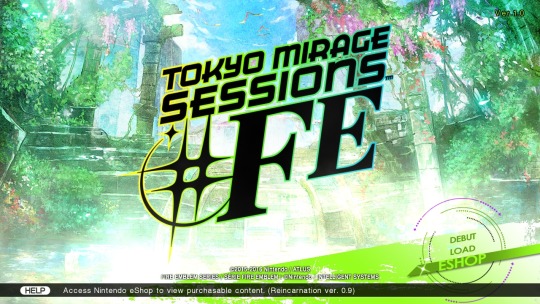
I’ll be talking about:
Story
Setting/Theme
Characters
Gameplay
1. Story
The story is nothing special - I enjoyed it, but it's a fairly typical jrpg "power of friendship and bonds" deal that is only made unique in any capacity by the idol culture that frames it. It's not bad, but it's not groundbreaking either. I wish the story were a bit longer to give more of a build up into the final confrontation. The earlier stages slowly start to set things up but even just one more dedicated chapter to ease into the final arc would have probably made the ending feel less rushed. That and I just enjoyed playing it overall and would liked more content.
The distinct chapters format to the flow may have been meant to simulate FE chapters while still also representing how persona stories often have noticeable breaks between dungeon arcs. In TMS though, it felt a bit more artificial, not damningly so, but I think the plot momentum was a bit worse for it.
The set up for each chapter break also revolves around Itsuki himself improving as an entertainer, even though he doesn’t know what direction he wants to focus on, and while it’s most emphasized early on, this aspect of Itsuki’s development himself feels almost abandoned or ignored through the mid and late game until the very end. The solution does make some sense, but some of the details that enable it to happen are a bit questionably contrived, and like the overall story, it felt a bit rushed in the final hour, based on what I remember.
Otherwise, the story did a good job of setting itself up, providing the characters with adequate motivation and means to seek the goals they set and each dungeon gave reasonable purpose for the main characters to tackle it.
The final chapter seemed to be trying to make up for the lack of build up by twisting and turning a bit more than usual, but most of its attempted twists were fairly standard fair for trying to draw out suspense and unfortunately were somewhat predictable for it. I was a little surprised at the host for the big bad, but mostly because I hadn’t been paying close enough attention so that was on me.
2. Setting/Theme
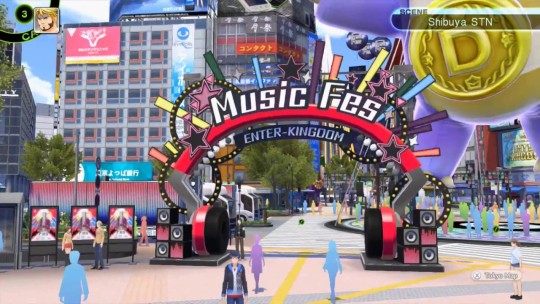
The Tokyo idol scene setting is the most interesting aspect of the story and while I can see it being polarizing, I found it novel myself. Mechanically, it does a good job of unifying the dungeons under a common theme of "things idols do" - such as posing for photo shoots or acting on TV.



Beyond dungeon design, the idol theme also naturally informed character designs and the multitude of costumes that appear throughout.
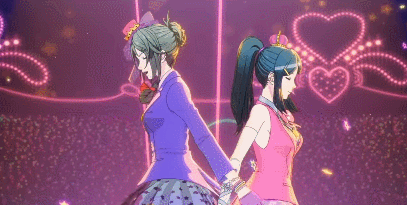
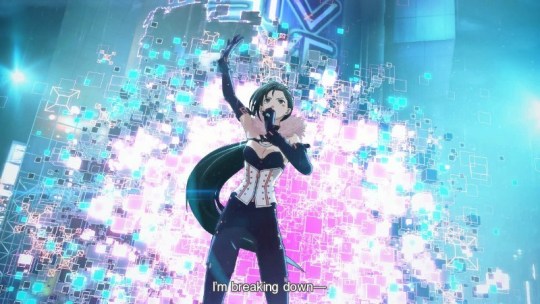

You can even see this thematic flair in the way that spell casting involves a character signing their autograph as a glyph!

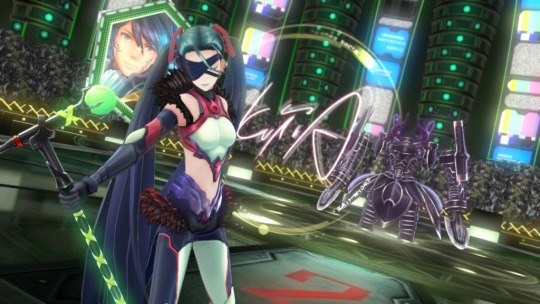
If there’s one oddity that stands out to me about the aesthetics of the game, it’s that the monster designs seem to be unable to decide whether they should be FE inspired or SMT inspired or neither, but even in the latter case most don’t seem to fit in with the idol theme in any capacity.
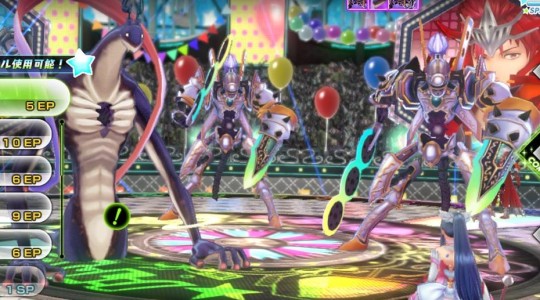
Even when enemies are FE inspired, they seem to have gone through a similar (if not more extreme) filter that the Mirage characters went through - becoming dramatically stylized and the only real purpose I can conceive for it is to make enemy classes that were definitely human in FE appear non-human here. For instance, the middle and right monsters above are myrmidon class enemies - unpromoted swordmasters from the FE universe.
Not to mention: Why do their out-of-combat sprites look like Organization XIII members!?

3. Characters

Like the story, the characters are good if nothing particularly revolutionary. Most seem built around one or two tropes but then are fleshed out beyond that which is fine. You learn more about them as you do their individual side quests (social links) and these do a good job of giving the feeling of evolving your bond with that character. The pacing of the side stories is mostly okay, though the gameplay reward for those that are plot locked to be very late doesn't always feel equal to how long you had to wait to do them. There's a bit of persona syndrome wherein all the chars get plenty of opportunities to interact with the MC, but would benefit from more time interacting with each other as well.
I liked all the characters in the end. There's a good variety between both the girls and boys, though because of join times some chars got more focused screen time than others. Again, I think a longer late game with more story side quests (instead of fetch quests) would have helped balance things out.
If I had to be as base as to rank the girls in terms of waifu ratings: 1. Eleonora 2. Tsubasa 3. Kiria 4. Maiko 5. Mamori = Tiki Though it's worth noting that top four are all really close, and each slot only wins out over their competition by a small margin. I don’t dislike Mamori or Tiki, I just am not into the little sister appeal.
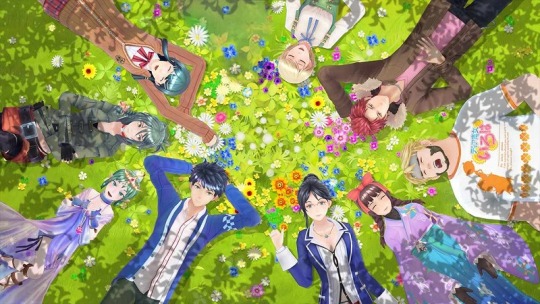
I suppose Barry Goodman is worth mentioning as well. Barry is a foreigner who settled in Japan and behaviorally embodies the most cringe-worthy aspects of otaku culture. He’s heavy-set, roughly groomed, and somewhat aggressive/abrasive about his passions. I’m not one to judge him for the subject of his passions, but the way he interacts with them would make me uncomfortable around him had he been a real person. Ultimately he is a good person at heart, but his poor people skills are unlikely to endear him to anyone on first impressions, and the fact that he doesn’t care only exacerbates his problems.
Finally, and predictably most disappointingly, the FE chars (heroes and villains) are barely developed and could be replaced with persona or persona like motifs without changing the overall plot. The FE aspect is little more than a coat of paint that gives secondary theme to the invading 'otherworld,' and it's a real shame and waste of potential.
Aside from the Mirage characters and Tiki themselves, there are however a few unmarked references that are at least self aware enough to be welcome Easter eggs for fire emblem fans:

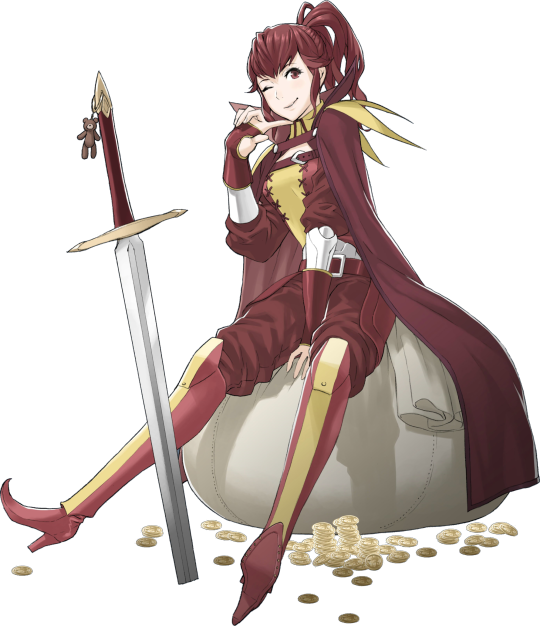
Anna is your convenience store shopkeeper, and there’s even a ‘shadow anna’ who will sell you more dubious dungeon consumables that a normal convenience store wouldn’t stock.

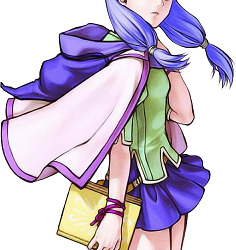
Ilyana works at the cafe, keeping close to her beloved food.
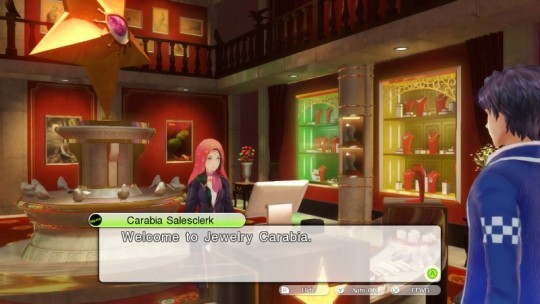
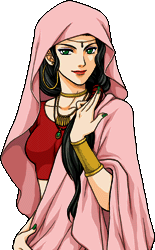
Aimee runs the jewelry store as she was the item store merchant in FE9 and 10
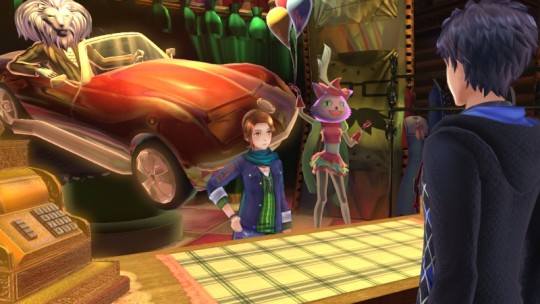
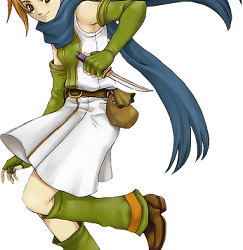
And Cath runs the costume shop. She’s a thief in FE6 with a distinct affinity for money, not unlike Anna, though not as extreme either. Admittedly, it’s been a while since I’ve read over her supports though.
I saw an npc employee at one of the random background shops in Shibuya central street that could also be Brady from FE Awakening, but the camera never got close enough to see him clearly enough to make a positive ID.
Finally, I found it amusing that all the playable chars' names are class puns/references
蒼井樹 = Aoi Itsuki > Aoi means blue in reference to FE lords typically having blue hair
織部つばさ = Oribe Tsubasa > Tsubasa in reference to her peg knight class
赤城斗馬 = Akagi Touma > 赤 (Aka) gives us “red” while 馬(uma) is “horse.” Red cavalier (partnered with a green cavalier) is a reoccurring archetype in FE. The Red cav tends to be the hot-headed one.
I can break down the others if desired, but these will do for examples.
4. Gameplay
Going to break this into a few parts:
General
Combat
Dungeons

1. General
The real reason this game is compared to Persona; gameplay mirrors a lot of persona's elements and it's almost easier to describe how it deviates from the Persona format than spend time detailing how they're the same. That said, if you like the persona formula (as I do), you'd probably enjoy TMS's gameplay flow as well.
While the lack of daily life and day limits for dungeons removes a lot of the tension of time management for them, I think it's fine since a lot of persona players rush dungeons in 1-2 days anyway and in TMS, once the dungeon is done, you don't have to worry about doing busy work to tick off the days until the plot is allowed to move forward again. The lack of social stats is an element of depth removed, but without a time cost element to activities, it makes sense and is probably a good thing for it to be absent from TMS (even if story wise it could have actually be viable as Aoi and the others grow their skills as performers).
Using the WiiU game pad as a smartphone screen to facilitate off-screen character interactions as well as display more detailed enemy information was clever if perhaps unnecessary (as persona 5 showed). Having the only map on the game pad actually made it a little disorienting to reference for me since my eyes had to leave my tv entirely, leading to me either holding my game pad up or bobbing my head up and down to compare my map with my surroundings. On the DS, the two screens are at least close by. I’d like to say there may have been a better use for the game pad, I’m not thinking of anything off the top of my head, so it may have been wise to minimize its use as a gimmick anyway.


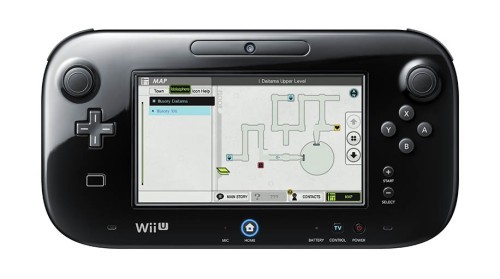
This is already in your phone history when you start the game, but it’s still probably my favorite moment from the text message logs:
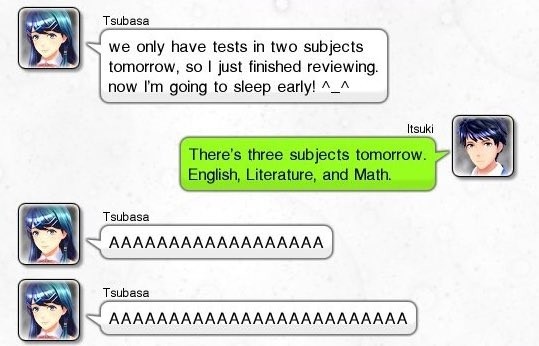
#relatable.
Replacing persona fusion is a more straightforward crafting system that is the source for your weapons and passive skills, and in turn, much like Tales of Vesperia, your weapons are the source of your skills, both active and passive. The system sounds more grindy than it is in practice though. Simply advancing through the dungeons and fighting 70-80% of the monsters you encounter naturally will provide you with enough materials to forge most weapons as they become available. In fact there were a number of times when I ran out of new weapons to forge and had to push on with already mastered weapons equipped. I liked that bosses and some savage encounters would drop mats of a higher tier than what was readily available from current monsters, and you had to spend them wisely before advancing the plot to the point where those mats became common. It let you preview the next tier of weapons and abilities for select characters but who you gave those weapons to was never overly stressful since you could get the other weapons you passed on later anyway.
Rare monsters drop unique mats that can make weapons that give unusual or otherwise off-type skills to characters and it makes catching rare monsters that flee rather than engage the player rewarding. IIRC, I encountered fewer than ten rare monsters in my entire play through though, so I did not feel it worth the time to actively hunt them unless there was some trick to make them appear more reliably (and catching them was also a bit dependent on the surroundings). Like treasure monsters in P5, they usually had some kind of gimmick where they were only weak to one thing if they had any weakness and the latter ones also came with dodge [weakness] passive and had a chance of just up and running from battle.
2. Combat
The one-more mechanic is replaced by "Sessions" which are not unlike self contained one-more combos anyway. The tag in attacking animations were pretty fun and though late game sessions can get quite long, there’s no way to speed up or skip session animations, possibly in part because of the existence of duo arts which use the session animations as a timer. They could have prohibited skipping prior to deciding on a duo art and then allow skipping or speed up after, though. Long session animations didn’t bother me, personally though, as session attack animations were varied and interesting enough that I never got tired of even the early basic ones (most of which were replaced by late game).
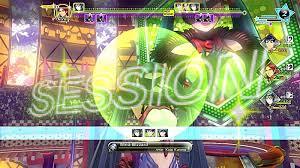
Openly displayed turn order, plus some late game skills that can actually influence turn order were both welcome features as well.

Beyond sessions, specials, duo arts, and ad-lib performances were great at providing extra variety and changing the pace of what might otherwise be rote combat. While duo arts and ad-lib performances were rng bonuses that you mostly just take whatever you can get and be grateful, specials were more deliberate, needing a resource that builds slowly at first. Later on, with longer sessions and meter boosting passives, the sp gauge builds up much faster, but even then specials usually should be selected carefully, especially within boss battles where recovering lost sp is a bit trickier.
That said, special skills were not created equal. Even though buffs and debuffs are powerful, some of the later buffing and debuffing specials came late, at a point where I already had normal skills that could buff or debuff at almost if not the same potency without spending SP. Similarly, as my repertoire of skills grew, my ability to hit weaknesses improved and using specials to break through resistances became less necessary, even as monsters began appearing with more resistances.
Finally, Itsuki’s second special - “Strike A Pose,” was absurdly good and only got better as my session combos grew longer late game. The ability to give everyone twice the actions in a turn opens up so many other combos that often times, there was little reason to use offensive specials in favor of either two individual sessions or a concentrate/charge boosted session.
Inversely, I found myself using healing specials a lot less, and perhaps it was because I used Tsubasa a lot less late game - I made Chrom a great lord which gave Itsuki healing and support which was kinda Tsubasa’s niche previously, so with Touma able to out damage Tsubasa and Elly covering flying enemies, Tsubasa just wasn’t out in combat all that often, which meant Mamori was the only one with healing specials (which were helpful on occasion) but in the end using Strike A Pose allowed me to get normal heals out in extra abundance while still enabling attackers to make a play to help clear troublesome enemies.
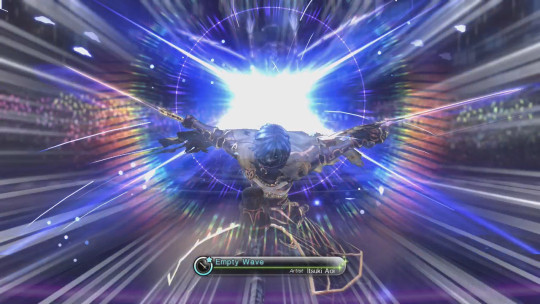
The FE weapon triangle’s representation in strengths and weaknesses among weapon types (not extending to magic though) gave a welcome way to predict weaknesses for enemies I had not encountered yet. One of the frustrating things about persona had always been that weakness/strength attributes for new monsters were difficult to predict and late game could cause you to walk into a bad situation that was never really your fault. Not only did the weapon triangle help mitigate some of the arbitrary mystery, but weaknesses were frequently consistent across similar enemy types at different levels even outside of the sword/lance/axe trinity. For example mage type enemies were, with few exceptions, all weak to swords and fire. Skills that deal effective damage (i.e. horseslayer/armorslayer) were also a great addition that gave characters tools to start session combos on enemies that they might otherwise be powerless against. The player also gets other ways to work around pesky resistances, features that are both welcome and necessary because...
If I have one glaring critic of the battle system it’s that Itsuki, like persona protags is mandatory. However, unlike persona protags, Itsuki has static combat tools and extremely limited ability to influence his own strength and weakness attributes. He’s always weak to fire and lances and since you can’t remove him from the front line, you always have someone in combat weak to those elements. Fortunately this is less deal breaking for the fact that Itsuki dying in combat doesn’t immediately game over (hallelujah!). In addition, later in the game most chars get passive skills that greatly increase their avoid against elements they’re weak to, Itsuki included. Still, being able to remove Itsuki from the front line would greatly increase your party diversity and flexibility. For a while after recruiting a second sword character, I had difficulty justifying putting him in the active party because Itsuki already filled the sword role. Eventually, I promoted Itsuki to a more support role and let the other char handle offensive sword plays.
One more minor complaint I have is the inability to swap out fallen allies. Having only three party members means that even one of them dying can be crippling, especially later on and on harder difficulties. I’ve wasted turns reviving downed allies and trying to heal back only for enemies to just repeat what killed someone in the first place and put me exactly where I was last turn with less healing items or sometimes in an even worse situation. While the boss dichotomy of easy/impossible with little in between that some persona bosses suffer from is present here, the existence of specials, ad-lib performances and duo performances that heal or revive greatly alleviate some of the comeback struggle that has a tendency to snowball in this combat system. As the only active non-rng option, specials in particular are important to the system. The severity of boss gimmicks isn’t quite as punishing in TMS compared to persona, but TMS’s smaller party size, can still cause a bad situation to cascade into unsalvageable territory.
3. Dungeons
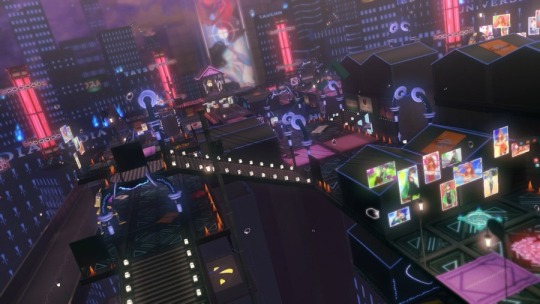
The dungeon design of TMS is interesting in that it departs from persona 3/4′s formula of randomly generated floors in favor of deliberately organized floor plans with usually only one correct path to the end. The linearity is sometimes broken up by treasures that you’ll have to backtrack for, but aside from that, there’s little mandatory backtracking within a dungeon. Dungeons stick around even after you clear them, allowing side stories to ask you to venture back over familiar ground for one task or another.
That said, the linear nature isn’t necessarily a bad thing. In TMS’s case, it allows the developers to give the player a learning curve for the dungeon’s mechanics and then challenge how well the player understood the earlier lessons, because the devs can guarantee that the player experienced the earlier sections before the later ones. It may sound obvious on paper, but it means that the developers can have a better awareness of the player’s competency at any given point in any dungeon, which is something that can’t be tracked when the player can go multiple routes at any given time. But I digress.
Another mechanical difference of note is how the player, Itsuki interacts with enemies pre-battle. In persona 3 and later, you could swing your weapon to hit an enemy in the field and that would start combat (at an advantage if they didn’t notice you), but in TMS, striking an opponent on the field knocks them back and stuns them, giving you the choice to then get closer and touch them to begin combat at an advantage or to avoid combat entirely. I like this greater degree of choice and it fits within the philosophy that TMS dungeons are made to be less stressful - less about meticulous resource management - than persona games. There’s still an incentive to engage in combat: you need to keep up a certain amount of level growth just to have the raw stats to beat bosses, but if you’re low on health and/or healing items or just plain short on available play time and you think or know there’s a checkpoint up ahead so you just want to make a push to reach it, you aren’t forced into battles you don’t want to engage in... with the exception of “Savage Encounters,” which are challenge monsters that seem to just exist to screw with you anyway. I think there was only one area prior to the last or second to last dungeons that had savage enemies I could actually beat albeit with great effort.
Playing TMS after Persona 5, it was also apparent that TMS’s idolaspheres were prototype palaces, from the set floor layouts and linear progression to the overarching themes of the dungeon informing its aesthetic and unique mechanics. In fact there are a number of things that TMS pinoeered for Atlus that then went on to feature in P5. You can read about some others here.
Puzzles were almost entirely navigation in nature - that is, how to use the dungeon mechanics and infrastructure to get from your start to your goal. It may be because it’s been a little over a month now, but none particularly stand out in my memory as being exceptionally good, while one or two I remember for being somewhat arduous or tiring. I’m still of the opinion that areas that the player is trying to solve puzzles in should have lower if not 0 encounter rate with random enemies, as battles, especially turn based ones that don’t tend to resolve in a single turn, can disrupt problem solving trains of thought.
Overall the dungeons are good though, and that’s important as they’re the meat of the gameplay. They are generally well paced with plenty to do and some minor stuff to find on your way to your target goal. Each dungeon’s unique mechanics fit with the dungeon theme and aside from a few exceptions the enemies are fairly distributed.
5. Conclusion
It has its flaws but I think, in the end, Tokyo Mirage Sessions #FE gets more right than it gets wrong. Even though the story was standard fair for this genre, I thoroughly enjoyed it and wished it had more content to its core for me to experience. I know there’s dlc, but the nature of dlc means that it’s nothing integral to the story and I’m not sure it would scratch the itch the way I want.
The setting is unique and the game fully embraces the themes it sets up and the themes in turn inform and affect almost every aspect of the game, giving it a unified appeal.
The combat is arguably more interesting than persona. It takes the same core formula of targeting weak points for massive damage but allows players more tools and freedom to circumvent bad matchups, make carefully planned strategic plays, or simply style on enemies with flashy satisfying attacks.
2 notes
·
View notes
Photo




endless list of favorite characters → ilyana (fire emblem: path of radiance)
↳ “i don’t know what’s happened. all i know is that my friends are hurting each other. if that means i have to stop you to save them, then i’m going to try.”
#fire emblem#tellius#ilyana#fire emblem path of radiance#fire emblem radiant dawn#mine#myfe#endlessfav#this is the last one of these i had planned...for now anyway#i just adore her color scheme she's so hashtag aesthetic
228 notes
·
View notes
Text
list of all name aesthetic moodboards:
this list will be updated every time i post a new moodboard. don’t see your name below? here is a short form you can fill out requesting one!
Aaliyah Abby Adalyn Adeena Adrianna Ahnaliese Ailsa Aisha Alegria Alex Alexandra Alexandria Alicia Alisha Amanda Amani Ameena Amel Amelia Amie Aminah Amira Ana Anasofia Anastasia Andrea Anna Anna Nazaria Annabelle Annie Antonia Anuka Arden Aria Arya Ashley Audrey Ava Avery Avia Ayala Ayesha Aysh Azra Bailey Bianca Bri Joy Brianna Brianne Briony Brooke Bruna Bryndis Caitlin Caitlyn Carina Carlos Carly Carmen Caroline Carolyn Caspar Cassie Catherine Cecilia Chelsea Chloe Christina Christopher Claire Clara Corina Cvetelina Dakota Dalen Daniela Danika Danna Daria Deven Diamond Diana Dil Dionne Dolores Dulcinea Eefa Elizabeth Ellie Elliott Elyse Ema Emily Emily-Jane Emma Eshter Rose Eva Fernando Fiona Francis Gabby Gabriella Gabrielle Gentiana Georgia Gisele Giselle Grace Gracia Han Hana Hanan Hannah Hayley Hazel Helin Hollie Ilyana Inés Ioana Irem Irielani Isabel Isabella Isabelle Jacqueline Jade Jahnay Jake Jasmine Jasmyn Jay Jayne Jennifer Jesse Jessica Joelle Johanna Jordan Josey Julia Julianna Juliet Juno Kai Kail Kaiya Kaja Kamila Kasmira Karen Kat Katarina Kate Kathryn Katie Katrina Katt Kayla Keala Keanna Kei Keith Kellen Kelsy Rose Kennedy Kiana Kiara Kiera Kimberly Kristina Kylie Kyra Lara Lauren Lesleigh Lexi Lidia Lily Linda Lindsey Liz Louise Loulia Lucia Lucinda Luisa Luna Lydia Mackenzie Macy Madison Manvi Marcela Maria Mariam Marina Marisol Marjam Martina Marya Matthias Mea Megan Megs Mel Mia Michelle Mikaela Mikala Mikayla Mollie Molly Monique Morgan Muna Na-ila Nadia Nalishebo Naomi Nat Natalia Nathalia Nathaly Nicole Nina Nirvana Noelle Noir Oceon Olivia Oliwia Omnia Paige Paloma Pascalle Paula Pearl Phoebe Pilar Piper Pratyusha Quinn Radima Radvilė Raine Rani Raquelle Rashad Rhia Ria Riley Alexander Rithaa Roan Robyn Rose Roxanne Ruby Sabine Sabrina Sadiya Samantha Sandra Sara Sarah Sassafras Serena Shan Shanelle Shazia Shiloh Simonka Sofi Sofia Sophie Stella Stephanie Sunya Suri Suzanne Syahindah Sydney Tahnee Tanya Tata Taylor Ted Ter’ae Teresa Tiana Tianya Tiara Trinity Ujeza Valentijn Vanessa Victoria Whitney Yvonne Zahira Zahra Zoe Zofia
links not working? let me know here, please!
77 notes
·
View notes
Text
Aesthetic goals: Ilyana, but in space
#I still havent figured out if its cool for me to call you Ilyana#but it seems like you dont mind so Im gonna roll with it
2 notes
·
View notes